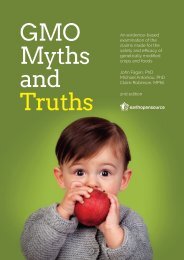1923%20Memoir%20on%20Maps%20of%20Chinese%20Turkistan%20by%20Stein%20s
1923%20Memoir%20on%20Maps%20of%20Chinese%20Turkistan%20by%20Stein%20s
1923%20Memoir%20on%20Maps%20of%20Chinese%20Turkistan%20by%20Stein%20s
You also want an ePaper? Increase the reach of your titles
YUMPU automatically turns print PDFs into web optimized ePapers that Google loves.
44 TI-IE REG LONS SIIHVESEI) [Chap. 11,<br />
easier to indicate certaiu topogrepl~ical<br />
distinctions deserving of notice. But both share the essential feature of containing<br />
whatever gound within the Tirim hasir) is capable of permanent cultivation under<br />
existing conditions.<br />
bin froln tile "lie in the south it is inainly because it is t1111s<br />
TIlr cultivable are:, is considr~ably greater within the western and nort11er11 belts.<br />
This may be taken as extending in a big arc from Yfirkand and Kash-<br />
'vrrtrrt' 'lorthertl gar to Korla antl the tract inl~x~ediately south of it. It contains the<br />
belt of O.Se6.<br />
far larger number of important oases, such as Yirhand, KRshgar, Ak-su,<br />
Kucll;~, and owing to them and to the short distances at which smaller ones are atrung out<br />
between them, the route pasring t,lrrough t,llis belt. of cultivable ground has from the earliest<br />
Ilistoric:~l t,imes to the present. day been the chief line of co~nnlunicaiion and trade within the<br />
'ririnl basin. These advantages for permanent occupation and traUic result mainly from tho<br />
fact that irrigation-that inJispeosable conclition of all cultivat,io~l in this basin-is here greatly<br />
facilihtecl by the volume and uanlber of the rivers as well as by pl~ysical Seat,~tres of tlre<br />
grot~nd which favour full use of their irrigation resonrccs.<br />
Among such features may be mentioned t.l~e absence or conll~arative ~larrowness of<br />
barren gl-avel stretches at the foot of tlre outer Iliils, which allows<br />
Po~~tiott of cuIt.iv~ted ct11tivat.io11 to be started from the very debouchure of the rivers; also the<br />
aWlhE.<br />
protection \vhich the Ykrliand river or 'rdrini with its broad riverine<br />
jur~gle belt affords front t,he moving sands of tl~e llaklamak;in. Ilence we find in the case of<br />
the larger oases cultivation extending for considerable distances aloug the beds of 611e rivers. a<br />
Since all of t,l~ese reach the Tirim aud 011 their lower courses command extensive areas inundated<br />
during tlood times, grazing grounds adequate for the needs of the oases are also<br />
available. On the other hand the map show?; a complete absence of cultivated areas of any<br />
size &Ion= the Thrim itself after the river has passed the northern edge of the Yurkand<br />
district. This striking fact is explained by the great difliculties wllicl~ the very slight fall in<br />
the river's bed and the consequent constant shifts of its course here oppose to the construct,ion<br />
and maintenance of irrigation canals of any size.<br />
With the nort!lern belt of oases may conveniently be rnentioned also the subsidiary<br />
basin of Kara-shahr which adjoins the extreme north-eastern corner of the<br />
Ki~ra-sllulrr basin. T~rim basin proper. " Thoug11 draining into the latter by the Konchedaryi,<br />
it sl~o~vs characteristic geographical features of its own. It is<br />
divided from the plains of the Tirim by the mesternmost hill-range of the Kuruk-tsgh which<br />
encircles it on the south, and a considerable portion of its area is occupied by the large freshwater<br />
lake of the Baghrash-kiil. This gathers the waters brought donzn by the Kara-shahr<br />
river from high plateaus of the Central T'ien-shan and, acting as a big natural reservoir,<br />
discharges them with an almost constant volume through the defile above Korla. An<br />
abundant water supply and an apparently less arid climate assure to Ka~a-shalrr chances of<br />
extensive cultivation, and the historical importance of the territory shows that in antiquity<br />
these were adequately ut,ilized. Their present neglect seems to be largely due to the population<br />
containing a considerable element of semi-nomadic Mongol herdsmen. The latter's<br />
presence alone serves to illustrate the difference in climatic contiitions between the Karashahr<br />
district antl the rest of the Tcrim basin. '<br />
This rlistinction is supported also by evidence<br />
derived from the historical geography of the Titrim<br />
basin. Tho detailed descriptions given of it by the<br />
early Chinese lliatorical records always separate the<br />
territories sitnated along tl~e ' Northern Rond ', i. r.<br />
those at the south foot of the T'ien-shall, from thofie<br />
on the 'soothe~n Iioad' which passed throogh Chnrkblik<br />
and Kbotan. In this as in many other notices<br />
of those records relaling to Central Asia the keen<br />
topographical sense of the Chinese clearly reflects<br />
itself.<br />
It is significant that though So.rhii, i. r. Yirkand,<br />
is duly indicated n6 the point through which passed<br />
the 'Southern Hoad' to the Pimire and beyond.<br />
yet this territory ia always described in its proper<br />
geographical nexus. dong with Ktiahgnr; see Wylie,<br />
'Notes on the il'estern liegions', Jcureal of (he An-<br />
thrupol. Inrlifule, x. p. 21, 47 sq.; Chnvanues, 2"oung-<br />
pao, 1907. pp. 170. 196 sqq.<br />
See Sheets Nn. 2. D.2; 5. A, H.2; 7. D. 2,s;<br />
12.A.3; 17.A.l.U,C.1,2.<br />
See Sheets KO. 20.D.4; 24. A-D.4; 26. A-0.1.<br />
' Cf. Serindia, iii. pp. 1179 sq., repercling the<br />
limited cultirstion of Kara.abahr and its causes.






